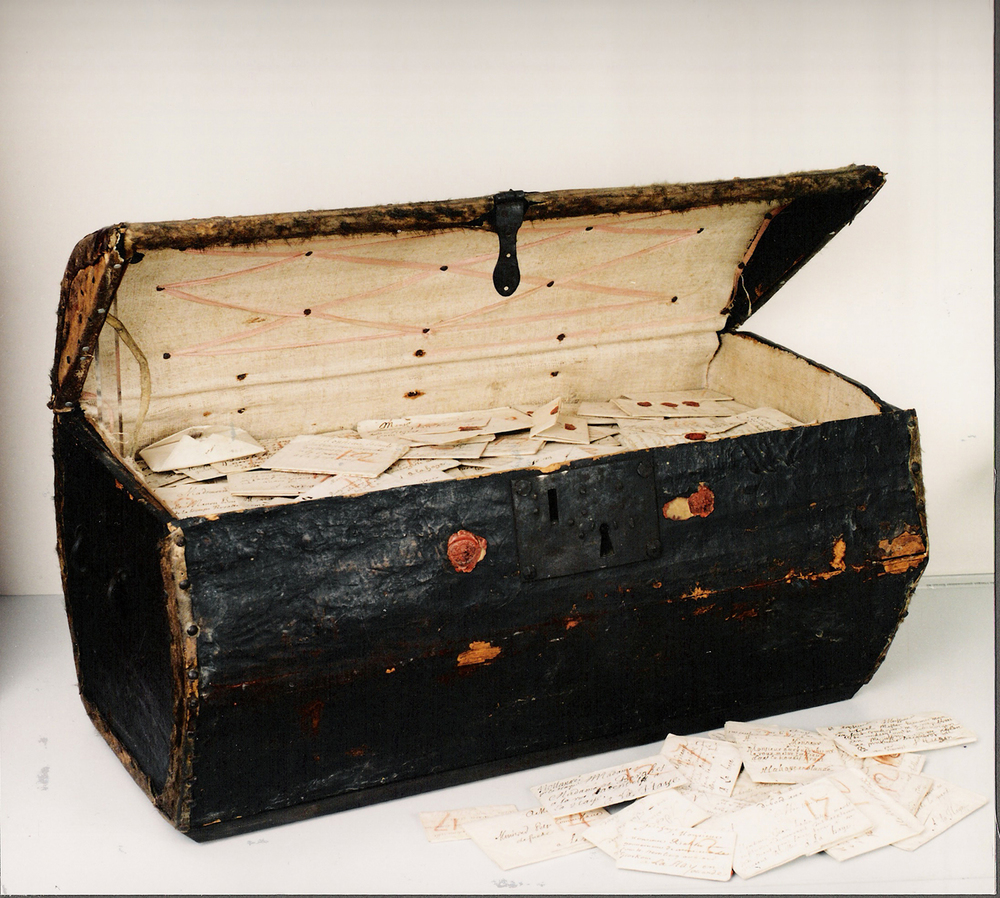A haul of undelivered letters from the 17th-century recently discovered in the Netherlands will be analysed by an international team of academics.
600 unopened letters found in a postmaster’s trunk were discovered in The Hague’s Museum voor Communicatie in 2012, along with 2,000 opened but undelivered letters. They date from between 1689 and 1707, just after William of Orange’s invasion of England, Scotland, and Ireland, known as the ‘Glorious Revolution’.
The letters will now be analysed by academics from the Universities of Oxford, Leiden, and Groningen, Yale, and MIT in a new project called ‘Signed, Sealed, & Undelivered’. X-ray technology from the field of dentistry will be used to read the closed letters without breaking their seals, in order to preserve unique material evidence.
Dr Daniel Starza Smith, a British Academy Postdoctoral Fellow at Oxford University, said the letters could shed important light on cultural life in 17th-century Europe: 'Something about these letters frozen in transit makes you feel like you’ve caught a moment in history off guard,' he said.
'Many of the writers and intended recipients of these letters were people who travelled throughout Europe, such as wandering musicians and religious exiles. The trunk preserves letters from many social classes, and women as well as men.
'Most documents that survive from this period record the activities of elites – aristocrats and their bureaucrats, or rich merchants – so these letters will tell us new things about an important section of society in 17th-century Europe. These are the kinds of people whose records frequently don’t survive, so this is a fantastic opportunity to hear new historical voices.’
'We've also noticed a striking and quite wonderful variety of folding and sealing techniques used on these letters. Our team wants to preserve all of this archive’s fascinating material evidence for further study – what can the way a letter was secured shut tell you about its writer, recipient, or the era in which they lived?'
These letters will tell us new things about an important section of society in 17th-century Europe
Dr Daniel Starza Smith
The letters were collected by Simon de Brienne and his wife Maria Germain, the postmasters of the Dutch city of The Hague. Simon later became official postmaster to King William III. His letters survive in their original storage trunk, waterproofed in seal skin and dotted with wax customs seals.
The project team will transcribe, translate and edit the opened letters. Working with Dr David Mills at Queen Mary, University of London, they will use x-ray tomography – which was used on some of the Dead Sea Scrolls – to attempt to read the unopened letters.
The trunk is also a valuable physical resource and the seals and the ways the letters were folded will also be investigated using a new research methodology called ‘letterlocking’, pioneered by MIT’s Jana Dambrogio.
The research team comprises Dr Rebekah Ahrendt (Assistant Professor in Music, Yale University), Dr Nadine Akkerman (Lecturer in English, Leiden University), Ms Jana Dambrogio (Thomas F. Peterson (1957) Conservator, MIT Libraries), Dr David van der Linden (NWO Veni Fellow and Lecturer in History, University of Groningen), Dr Daniel Starza Smith (British Academy Post-Doctoral Fellow, Lincoln College, Oxford), and Mr Koos Havelaar (Director, Museum voor Communicatie, The Hague).
The project has received funding from MIT Libraries, the Netherlands Organisation for Scientific Research (NWO), and Metamorfoze, the Dutch national programme for the preservation of paper heritage, in order to begin conserving and cataloguing these letters.
